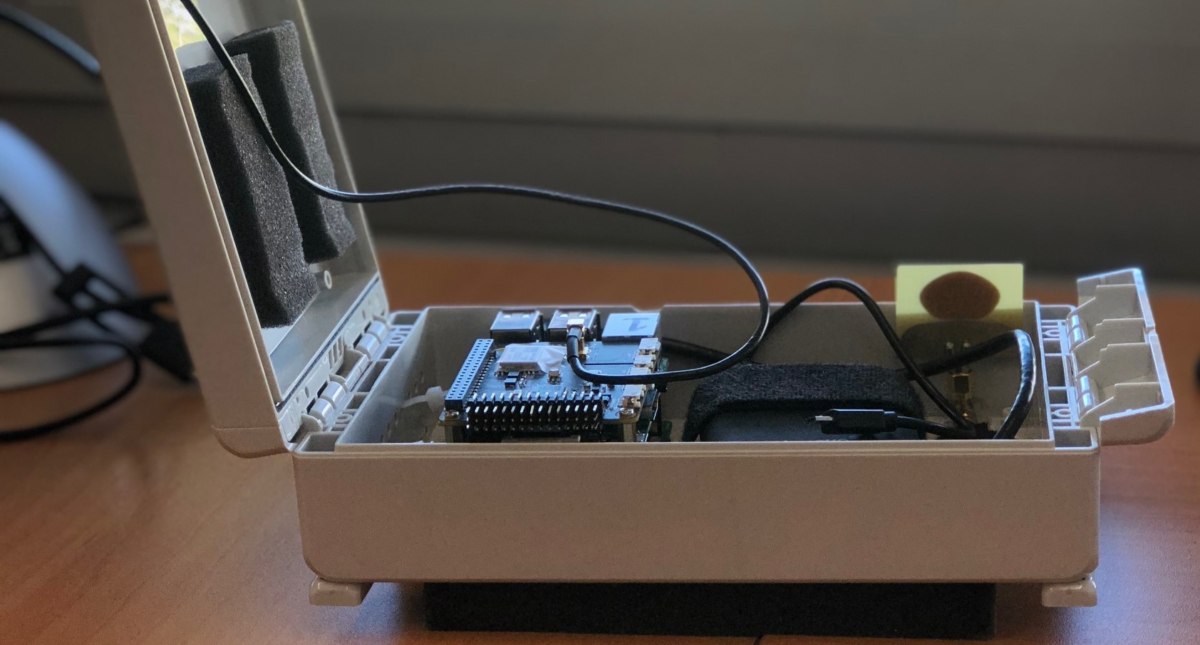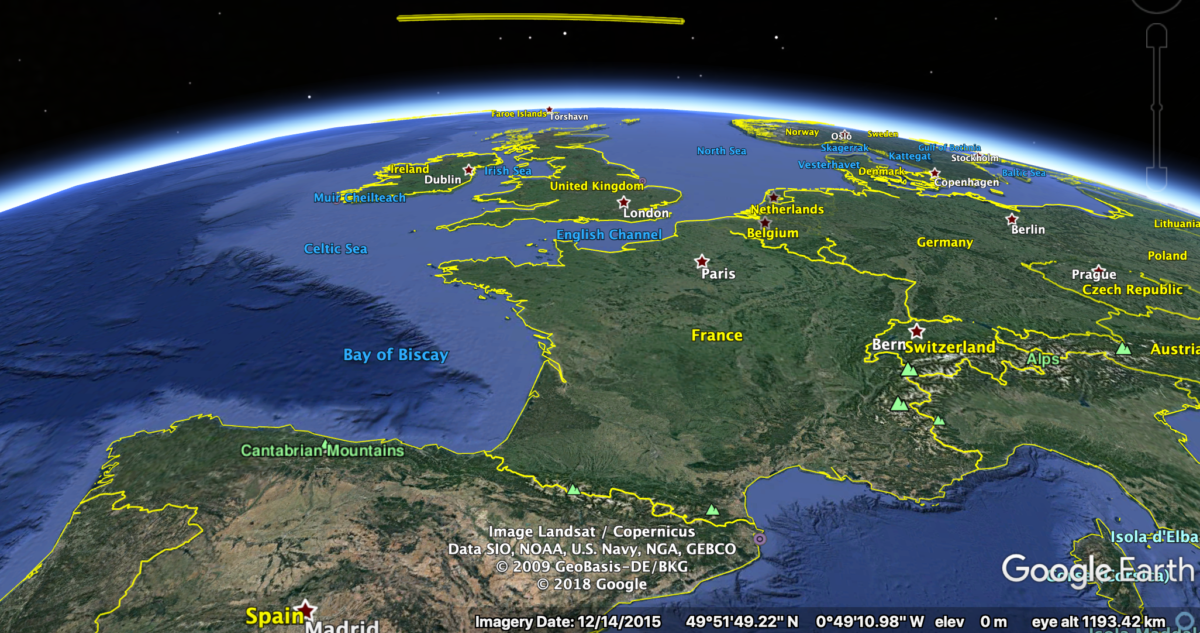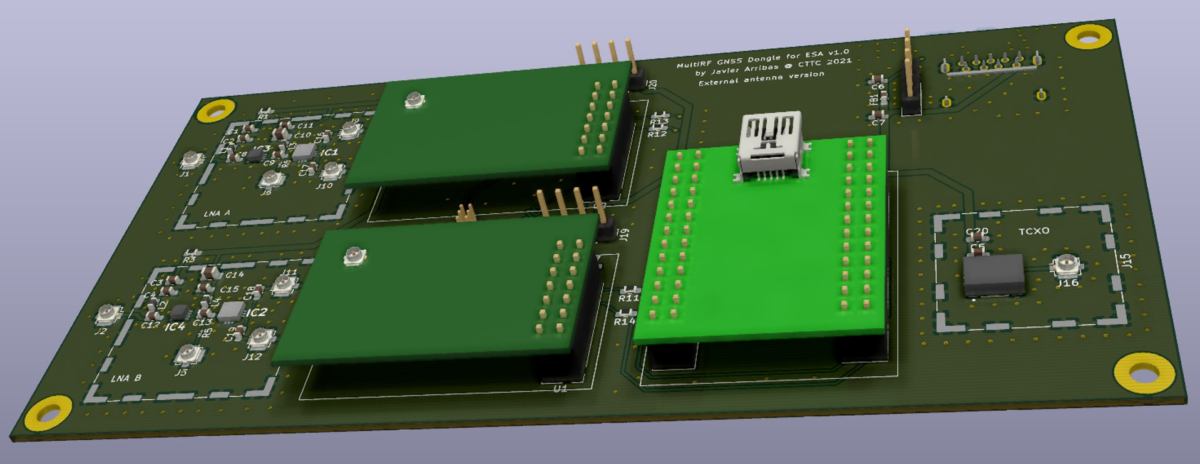The improvement and democratization of navigation, positioning and related device technologies have the power to change people’s lives for the better. The Research Unit aims to become a World-leading reference in bringing Global Navigation Satellite Systems (GNSS) and Device Technology to the people, either for scientific, business, or social endeavors.
Scientific and technical challenges of navigation and positioning systems use to boil down to getting the proper radiofrequency (RF) signals and tracking their evolution in time. Ranging of RF signals means achieving extremely good signal synchronization, understood as the proper tracking of signals wavefront’s group and phase velocity. This is particularly challenging in GNSS, but the lessons learned can be readily exported to communication systems. On the other way around, techniques developed in the framework of communications and coding theory such as the turbo concept or belief propagation algorithms can also contribute to synchronization and detection functionalities, adding statistical inference to the estimation and detection concepts.
In order to tackle the challenges arisen by modern Navigation and Positioning systems and services, our research approach is based on the systematic application of Statistical Inference principles to the design of navigation devices, including digital Phase and Delay Lock Loops, antenna array synchronization, open loop synchronization schemes, vector tracking loops, Kalman filters, nonlinear Gaussian filters, and particle filters, but also detection theory (high-sensitivity receivers), communication theory (waveform design), and coding theory (such as the turbo concept and belief propagation algorithms), delivering innovative solutions in industry-grade form factors.
Complementarily, we develop microwave and optical sensors for gas, liquid, and solid detection, including microwave components for advanced communication systems, such as 6G. Sensors and microwave devices are designed and made using micro/nano fabrication, 3D printing, inkjet printing, laser machining, MEMS, superconductivity and LTCC.
Research lines
In the field of navigation, robustness is a concept that encompasses the integrity and reliability of the obtained positioning and timing solution. This includes signal authentication, hybridization of GNSS with other technologies, and the ability to mitigate unintentional or maliciously crafted interferences. This later case is especially relevant when GNSS is applied to critical key infrastructures, unmanned vehicles, or in Security, and can range from simple jamming sources that aim to overpower GNSS signals (denial of service), to sophisticated spoofing or meaconing signals that aim to covertly mislead GNSS receivers.
We take advantage of our solid background on antenna arrays for GNSS, Bayesian estimation, Data Fusion, and on coding schemes, to perform cutting-edge research on robust navigation solutions, with a stable collaboration with relevant customers and actors at national and international levels.

Software-defined radio (SDR) is a radio communication system where components that have been traditionally implemented in hardware are instead implemented by means of software on a personal computer or embedded system. In practice, SDR is a combination of Digital Signal Processing, professional programming best practices distilled from the IT industry, and the electronics associated to the RF front-end.
We offer our World-leading, open-source project GNSS-SDR as a practical showcase of the SDR approach capabilities and potential. The software can run on regular personal computers, but also on embedded systems based on FPGA and ARM processors, hence allowing smaller size, lighter weight, and lower power consumption for the overall receiver.

Sensor and device engineering implementation: from design to fabrication and testing. Large range of operating frequencies, from a few MHz to visible light wavelengths. Diverse technologies: micro/nano fabrication, 3D printing, inkjet printing, laser machining, MEMS, superconductivity and LTCC. Reconfigurable and fixed device topologies. Wireless sensor development for the detection of gas, liquids, and solids. Microwave devices for 6G and future communications systems.
Our aim is to contribute with a streamlined approach from concepts to products, thus helping to raise the Technology Readiness Level of our research products by design. In other words, to contribute in bringing new concepts and ideas from their abstract conceptualization to their actual deployment in the shortest possible time and effort. In that sense, we try to learn from industrial best practices and apply them in a scientific, accountable fashion. Concepts such as maintainability, reproducibility, scalability, continuous integration, and roll-out delivering come into play.
The ability to quickly generate fully customized, lightweight, low-consumption, and low-cost navigation devices, possibly hybridized with other communication systems, can be a key factor for meeting the Position, Navigation, and Time (PNT) requirements of the forthcoming generation of commercial satellite-based services established on Low Earth Orbits.

For more information clic here
